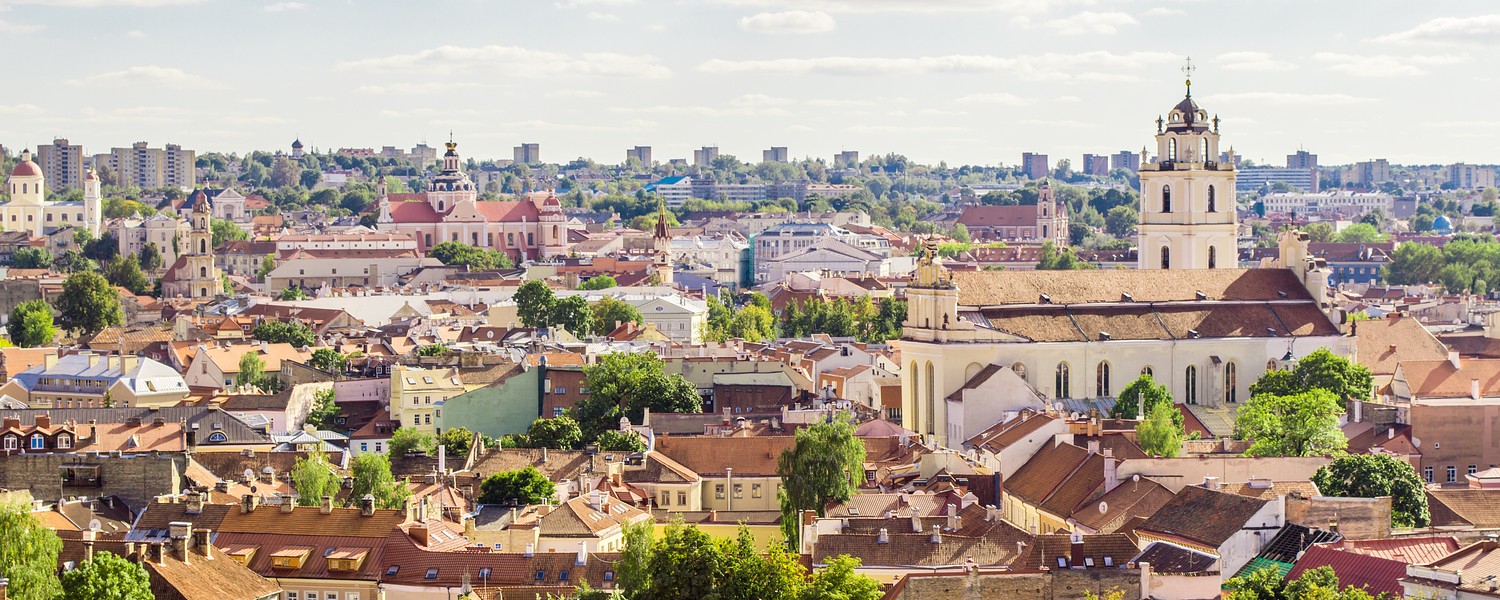
Provided by:
Andrii Lutsyk/Shutterstock.com

Our travel guides are free to read and explore online. If you want to get your own copy, the full travel guide for this destination is available to you offline* to bring along anywhere or print for your trip.
*this will be downloaded as a PDF.Price
€4,95
The City
The guide was updated:
Vilnius is a UNESCO World Heritage Site, and it is not hard to see why with all the wonderful historic sights found here. The city’s extraordinary appearance of historic continuity is all the more amazing when you consider its turbulent history. Vilnius is now back where it rightly belongs, at the heart of Europe, and this most quintessentially European of cities has quickly gained a reputation as being a charming, delightful and, it has to be said, magical place.
It is no wonder that Vilnius has become such a popular tourist destination in recent years for the simple reason that few people can resist its magical charms. The city is large enough to explore, but small enough not to get permanently lost in, Vilnius is an architectural dream come true, a city soaked in atmosphere, and alive with history.
Despite its reputation as a Baroque city, Vilnius is rich in other architectural forms. There are some stunning examples of classicism, eclecticism, brick gothic, and art nouveau in the city centre, especially along the showcase Gedimino Avenue. The city abounds with quirky architectural flourishes, from mysterious masks to mischievous gargoyles. Quite simply, you just cannot take your eyes off the place.
Most of the buildings in Vilnius date from the periods immediately after the great fires of 1610, 1737, 1748, and 1749, when the city’s wooden buildings were done away with. Amazingly, however, the Old Town’s street structure is virtually unchanged since medieval times.
The best way to see Vilnius is on foot (just follow the cobblestone road). The city is also a dream for cyclists with clearly-marked cycle lanes covering virtually the entire city centre and bringing all the city’s sights within easy reach.
There is, of course, much more to Vilnius than the Old Town. The city centre is filled with beautiful parks and majestic buildings standing proudly atop steep, hilly streets. It is also a delight to walk along the banks of the river Neris as it serenely snakes its way through the city centre. The riverside path offers spectacular views of the Old Town on one side, and the imposing skyscrapers of the New District on the other.
It is no wonder that Vilnius has become such a popular tourist destination in recent years for the simple reason that few people can resist its magical charms. The city is large enough to explore, but small enough not to get permanently lost in, Vilnius is an architectural dream come true, a city soaked in atmosphere, and alive with history.
Despite its reputation as a Baroque city, Vilnius is rich in other architectural forms. There are some stunning examples of classicism, eclecticism, brick gothic, and art nouveau in the city centre, especially along the showcase Gedimino Avenue. The city abounds with quirky architectural flourishes, from mysterious masks to mischievous gargoyles. Quite simply, you just cannot take your eyes off the place.
Most of the buildings in Vilnius date from the periods immediately after the great fires of 1610, 1737, 1748, and 1749, when the city’s wooden buildings were done away with. Amazingly, however, the Old Town’s street structure is virtually unchanged since medieval times.
The best way to see Vilnius is on foot (just follow the cobblestone road). The city is also a dream for cyclists with clearly-marked cycle lanes covering virtually the entire city centre and bringing all the city’s sights within easy reach.
There is, of course, much more to Vilnius than the Old Town. The city centre is filled with beautiful parks and majestic buildings standing proudly atop steep, hilly streets. It is also a delight to walk along the banks of the river Neris as it serenely snakes its way through the city centre. The riverside path offers spectacular views of the Old Town on one side, and the imposing skyscrapers of the New District on the other.


